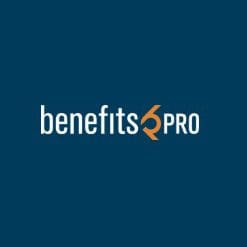Employment loyalty has shifted dramatically in recent decades. Employers that evolve in response may be surprised at how well their companies perform – and the TPAs and brokers who help them can find new growth opportunities in the process.

October 2, 2023
By Bo Armstrong
Originally posted on BenefitsPRO.com
Workplace benefits have evolved dramatically since Caesar Augustus extended a pension to retiring legionnaires to prevent rebellion (a lump sum equal to 13 times their salaries). The next major employer-sponsored benefits advance came when the Bank of England launched a pioneering private-sector pension plan in 1739.
From that point forward, benefits have progressed somewhat rapidly. As trade and labor unions took hold in the 1800s throughout Europe and the U.S., companies were held increasingly responsible for working conditions and workforce health and welfare on and off the job.
Changing dynamics
Employers traditionally have been in control of worker positions, salaries, and when, where, and how long they worked as financial obligations kept employees in place even when dissatisfied. American adults typically work for more than 40 years, and at one time, many were employed by the same company for their entire careers. However, the average adult now works 12 different jobs over their lifetime.
Since the 19th century, employers have increasingly facilitated employee health and welfare, but COVID-19 changed the employee-employer relationship far more drastically. Employees called on employers to support their livelihood, health, and dignity to degrees never before experienced. Decades of evolutionary change were effectively compressed into barely two years. Pandemic-related layoffs and furloughs found workers regulating their time and energies without employer involvement.
Attitudes toward work and employers have changed regarding the location in which they work, the flexibility of their schedules, and the benefits they need and want. Employees are now far more interested in benefits that protect their security and enhance their overall well-being. They expect and even require employers to provide benefits that address their physical, mental, and financial well-being.
Employers who fail to respond are challenged with low productivity, high turnover, and difficulty hiring. Benefit programs have to play a significant role in this response. As workers battle anxiety, stress, and fatigue and assume more influence in the employee-employer dynamic, employers must develop effective and strategic responses that address employee concerns while balancing associated costs.
Lots more jobs, far fewer workers
The U.S. Chamber of Commerce reported that as of May 2023, American companies continue to face unprecedented challenges in finding enough workers to fill job openings across companies of all sizes, industries, and states. Many jobs have been added post-pandemic, but many Americans who lost their jobs during the pandemic have chosen not to return to work. The Chamber estimates that, compared to February 2020, 3 million fewer Americans now participate in the labor force. The net effect is that competition for prospective employees can be intense, and often, employer-sponsored benefits are the deciding factor. However, not all benefits are valued equally among potential employees.
Different generations, different expectations
With people living and staying active longer, the American workforce now includes five generations, each with different benefit needs and wants. Employers face a significant challenge meeting such diverse expectations while controlling costs. However, commonly available benefits options can help address a variety of expectations while saving money for the employer and employee alike.
First, let’s review the different generational cohorts and their benefit interests.
Traditionalists
Traditionalists need insurance coverages (major medical, dental, vision, life) but may also seek FSAs or HSAs for unreimbursed healthcare expenses to help protect retirement savings, retirement plans with employer matching, and wellness programs and perks.
Boomers
Boomers also need insurance coverage, but other concerns include dependent care benefits for elderly parents, FSAs or HSAs, retirement plans with matching, wellness programs and perks, and student loan repayment assistance for parent loans.
Gen X
Gen Xers may seek insurance coverages with plan options, DCFSAs for children and elder care, FSAs or HSAs, retirement plans with matching, student loan repayment assistance for themselves and parent loans, tuition reimbursement, and continuing education courses.
Millennials
Millennials are generally attracted to insurance coverages with plan options, DCFSAs, FSAs or HSAs, retirement plans with matching, student loan repayment assistance, sabbatical programs, and community service options.
Gen Z
Gen Zers, being young and healthy, may still seek insurance coverage but with more emphasis on digital health tools and virtual services, employee assistance programs offering counseling and mental health services, student loan repayment assistance, financial wellness programs that help deal with debt, tuition reimbursement, and continuing education.
To learn more about how changing dynamics create new opportunities for TPAs and brokers, read the full article on BenefitsPro.com.

Bo Armstrong
Chief Marketing Officer, DataPath, Inc.
Bo has over 20 years of marketing leadership experience. His responsibilities include branding, communications, social media, product marketing, PR and promotions. He focuses on identifying emerging market trends within the benefits industry and advocating for customers and their needs. Bo is also a national conference speaker and author of numerous white papers and articles on the healthcare benefits industry.
For 40 years, DataPath has been a pivotal force in the employee benefits, financial services, and insurance industries. The company’s flagship DataPath Summit platform offers an integrated solution for managing CDH, HSA, Well-Being, COBRA, and Billing. Through its partnership with Accelergent Growth Solutions, DataPath also offers expert BPO services, automation, outsourced customer service, and award-winning marketing services.
